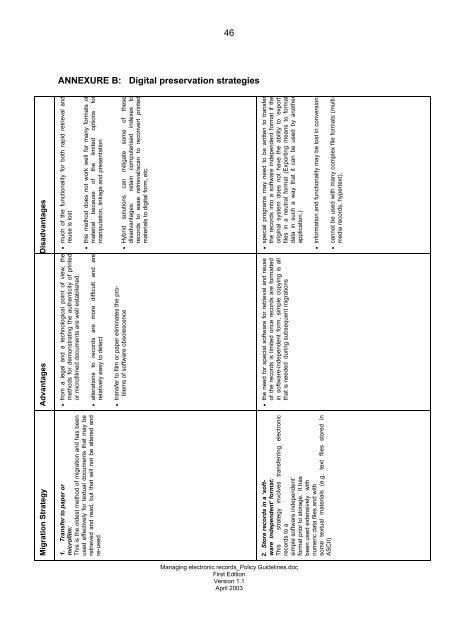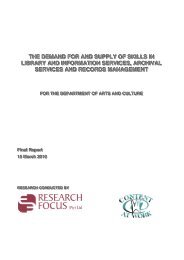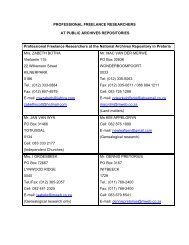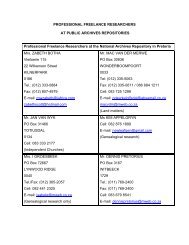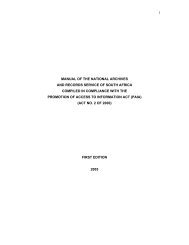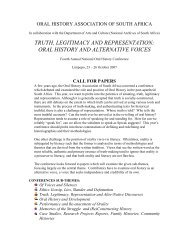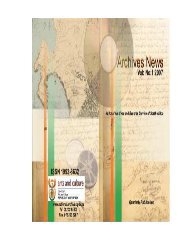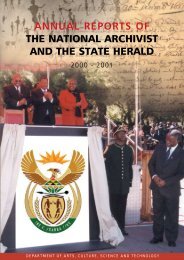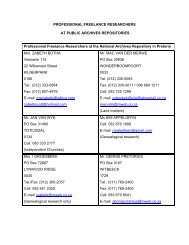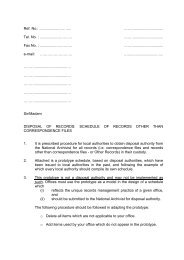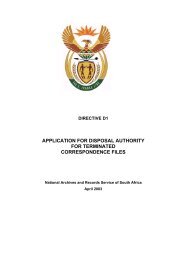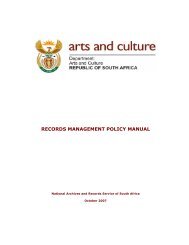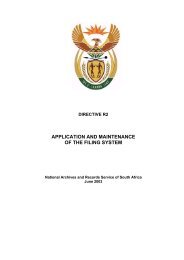managing electronic records in governmental bodies - National ...
managing electronic records in governmental bodies - National ...
managing electronic records in governmental bodies - National ...
Create successful ePaper yourself
Turn your PDF publications into a flip-book with our unique Google optimized e-Paper software.
46<br />
ANNEXURE B: Digital preservation strategies<br />
Migration Strategy<br />
1. Transfer to paper or<br />
microfilm:<br />
This is the oldest method of migration and has been<br />
used effectively for textual documents that may be<br />
retrieved and read, but that will not be altered and<br />
re-used.<br />
2. Store <strong>records</strong> <strong>in</strong> a ‘software<br />
<strong>in</strong>dependent’ format:<br />
This strategy <strong>in</strong>volves transferr<strong>in</strong>g <strong>electronic</strong><br />
<strong>records</strong> to a<br />
simple software <strong>in</strong>dependent’<br />
format prior to storage. It has<br />
been used extensively with<br />
numeric data files and with<br />
some textual materials (e.g. text files stored <strong>in</strong><br />
ASCII)<br />
Advantages<br />
• from a legal and a technological po<strong>in</strong>t of view, the<br />
methods for demonstrat<strong>in</strong>g the authenticity of pr<strong>in</strong>ted<br />
or microfilmed documents are well established.<br />
• alterations to <strong>records</strong> are more difficult and are<br />
relatively easy to detect<br />
• transfer to film or paper elim<strong>in</strong>ates the problems<br />
of software obsolescence<br />
• the need for special software for retrieval and reuse<br />
of the <strong>records</strong> is limited once <strong>records</strong> are formatted<br />
<strong>in</strong> software-<strong>in</strong>dependent form, simple copy<strong>in</strong>g is all<br />
that is needed dur<strong>in</strong>g subsequent migrations<br />
Disadvantages<br />
• much of the functionality for both rapid retrieval and<br />
reuse is lost<br />
• this method does not work well for many formats of<br />
material because of the limited options for<br />
manipulation, l<strong>in</strong>kage and presentation<br />
• Hybrid solutions can mitigate some of these<br />
disadvantages: reta<strong>in</strong> computerised <strong>in</strong>dexes to<br />
<strong>records</strong> to ease retrieval/scan to reconvert pr<strong>in</strong>ted<br />
materials to digital form, etc.<br />
• special programs may need to be written to transfer<br />
the <strong>records</strong> <strong>in</strong>to a software <strong>in</strong>dependent format if the<br />
orig<strong>in</strong>al system does not have the ability to ‘export’<br />
files <strong>in</strong> a neutral format (Export<strong>in</strong>g means to format<br />
data <strong>in</strong> such a way that it can be used by another<br />
application.)<br />
• <strong>in</strong>formation and functionality may be lost <strong>in</strong> conversion<br />
• cannot be used with many complex file formats (multimedia<br />
<strong>records</strong>, hypertext).<br />
Manag<strong>in</strong>g <strong>electronic</strong> <strong>records</strong>_Policy Guidel<strong>in</strong>es.doc<br />
First Edition<br />
Version 1.1<br />
April 2003


